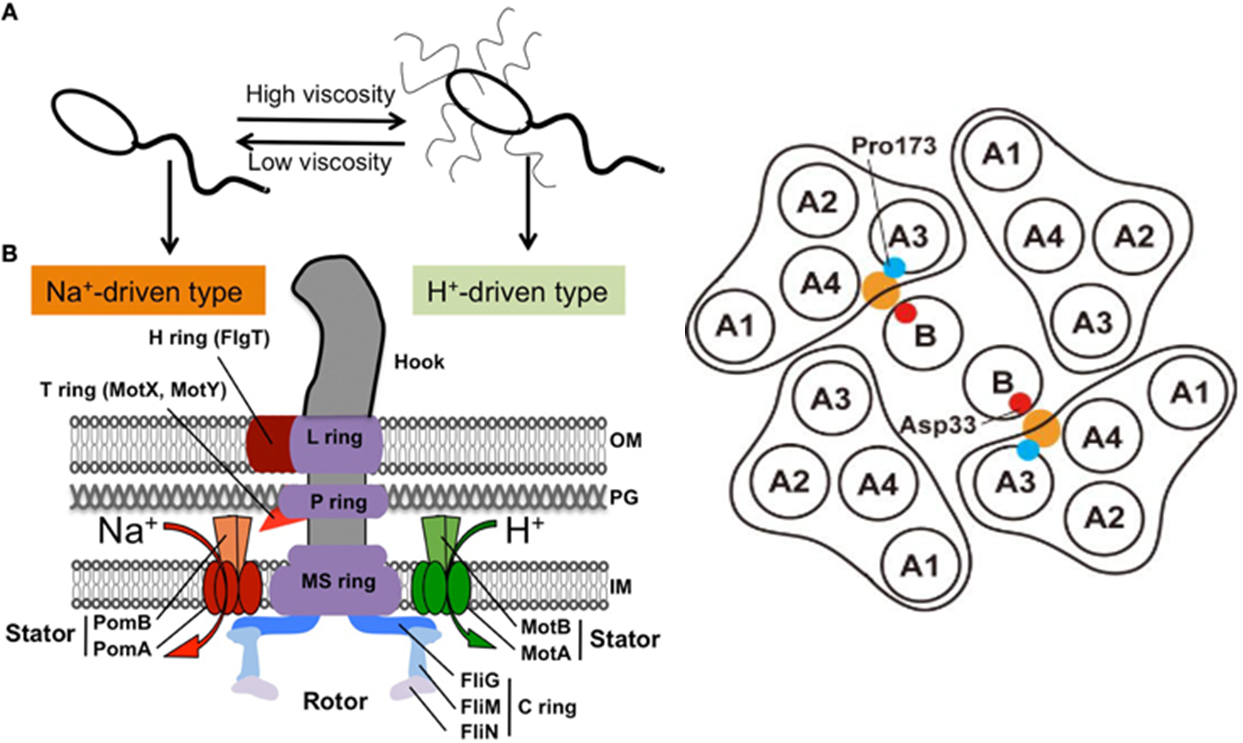Part:BBa_K1639006
PotB59-pomA
PotB59, chimeric protein that is formed by the N-terminal region of PomB and the C-terminal of E. Coli MotB
It was shown that a chimeric protein, PotB, renamed as PotB59, that has the N-terminal region of PomB (1–50) fused to the C-terminal periplasmic region of E. coli MotB (59–308), is functional with PomA in E. coli as well as in strains of V. alginolyticus that are defective in MotX or MotY (Asai et al. 2003) Instead of the hydrogen-dependent MotA, MotB stator protein partially adapted from the V. alginolyticus, sodium-dependent Stator proteins were insalled. After this adaptation, the flagellar velocity increased by twice fold.
Usage and Biology
Mucus layer of stomach is very thick and the flagella of natural E. Coli does not have sufficient torque or speed to allow to enter.. In our project, we aim to give E. Coli the ability to enter the stomach’s mucus layer by increasing both of these characteristics. In order to achieve this goal, we plan to use PomA/PotB59 system. The driving force of the bacterial flagellar rotation is an ion concentration gradient between the two sides of the membrane. The energy needed to rotate the flagella is generated by the majority of bacteria as a H or Na ion concentration gradient. In proton(H)-driven motors, the rotation of the flagella is carried out by the MotA and MotB membrane proteins. These proteins are actually H+ channels and when H+ moves through these channels depending on the concentration gradient, the necessary energy for flagellal rotation is created. This system that uses H+ is used by E. Coli and many other bacterial strains to generate energy for flagellar rotation. Other bacterial strains rely on Na+ to power their flagellar motor. These include Vibrio spp. These bacteria, in place of MotA and MotB proteins, use homologous membrane proteins PomA and PomB. These proteins function as Na+ channels and ensure that the necessary energy for flagellar rotation is generated as Na+ passes along the channel.(Figure 2) Furthermore, in bacteria that use Na+ channels to power their flagella, there are MotX and MotY proteins which are localized in the outer membrane. These two proteins stabilize the binding of PomA/B proteins to the motor. Flagella that work by Na+ have greater speed and rotational power that those that depend on H+
Sequence and Features
- 10COMPATIBLE WITH RFC[10]
- 12COMPATIBLE WITH RFC[12]
- 21INCOMPATIBLE WITH RFC[21]Illegal BamHI site found at 2
Illegal XhoI site found at 1724 - 23COMPATIBLE WITH RFC[23]
- 25INCOMPATIBLE WITH RFC[25]Illegal AgeI site found at 833
- 1000COMPATIBLE WITH RFC[1000]
//chassis/prokaryote/ecoli
//collections/probiotics/production
| None |

